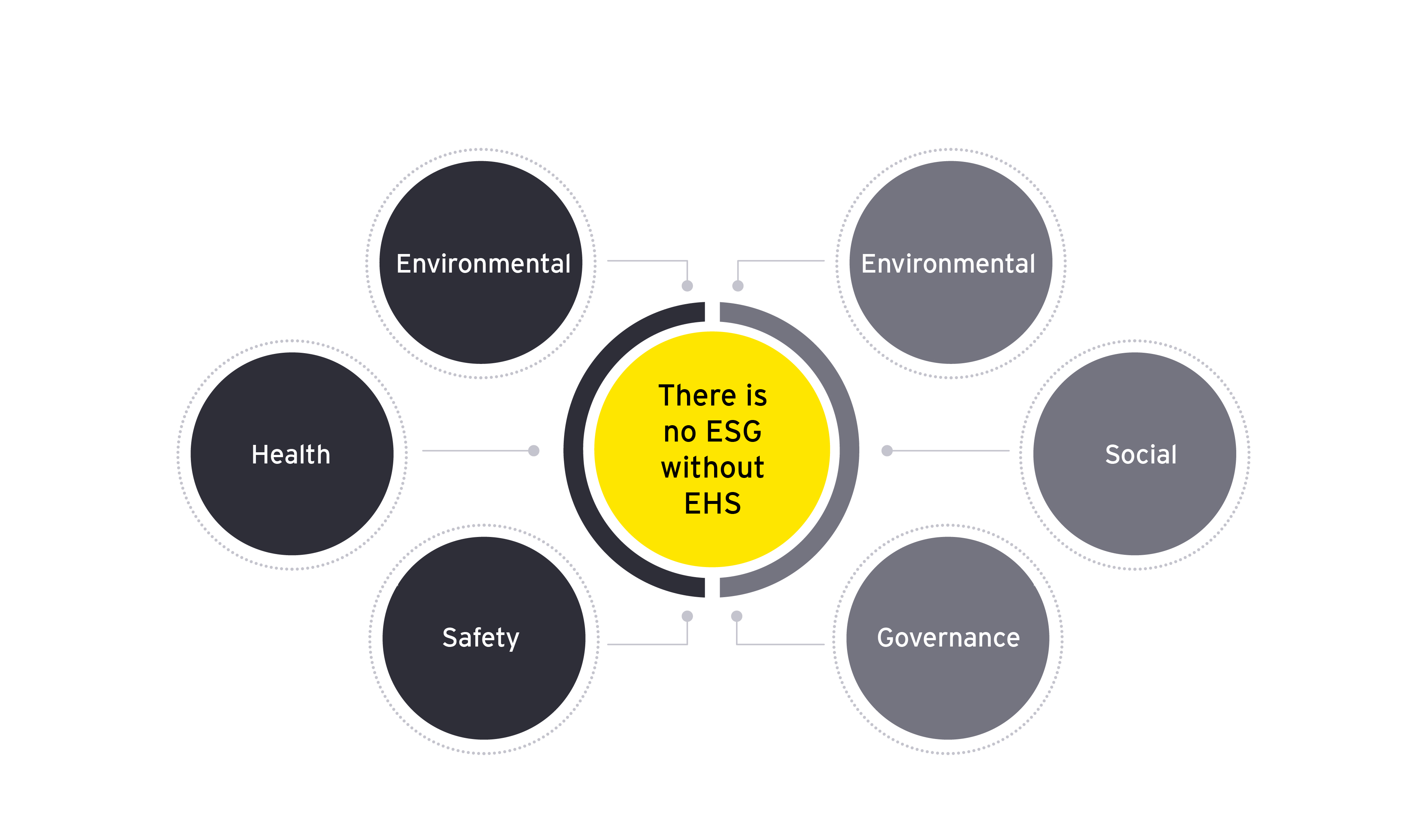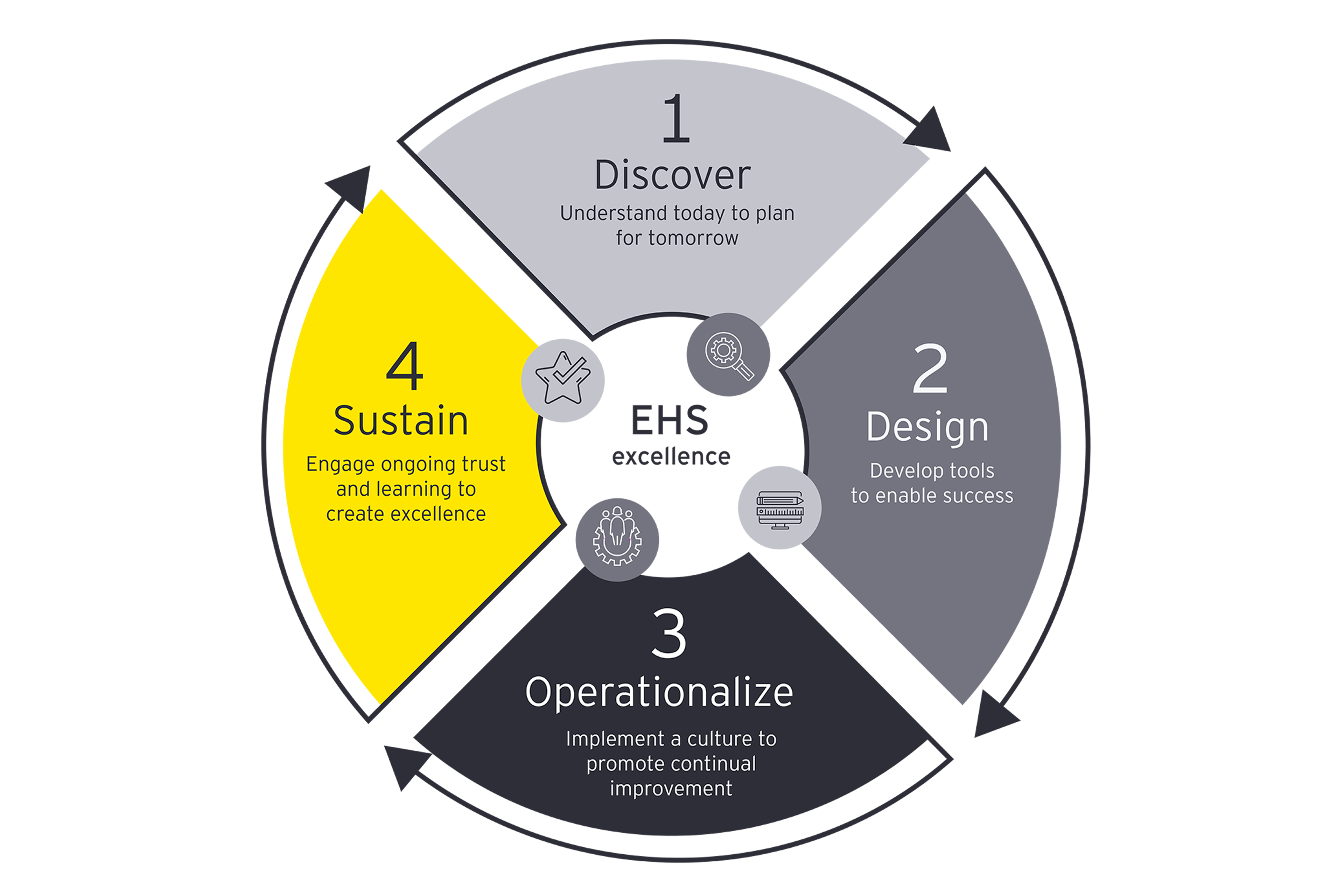A golden opportunity is being missed by not bringing learnings from the past 30 years to build a better world of work.
Path to transforming ESG using EHS
EY research and experience shows that successful EHS transformation relies on an organization’s understanding of how its people and systems interact. It is driven by four key elements:
- Integration: embedding EHS in the business process, and replacing silos and linear hierarchies with collaborative networks, supported by digital technologies
- Simplicity: making systems straightforward and people-centric to drive employee engagement and participation
- Focus: keeping a tight focus on critical risks, using technology and automation, to make data collection more efficient and accurate
- Agility: developing agile frameworks, supported by robust processes, that can adapt to the changing world of work
A strong ESG performance may be built on a leading EHS framework with a robust foundation. Organizations that fail to make the necessary connection between the two functions may not only wasting valuable time and resources, but also running a critical business risk.
Supporting EHS transformation
Organizations should consider integrating EHS with ESG in a way that is easy to understand, with a focus on managing critical risks, and is agile enough to adapt to the changing world of work. To begin your journey of understanding how EHS can drive transformation in ESG, consider the questions below.
Board members:
- What is the role of EHS in leading the ESG agenda?
- How can EHS leadership programs help build ESG leadership capacity and sponsorship?
- How do we better integrate EHS and ESG initiatives and outcomes?
- How can EHS help operationalize ESG?
Functional heads:
- How can ESG leverage existing EHS data collation, reporting and assurance processes?
- Where will EHS reporting requirements overlap with the broader ESG reporting requirements?
- How do we better integrate EHS and ESG initiatives and outcomes?
- How can EHS help operationalize ESG?
The executive team:
- What is the role of EHS in leading the ESG agenda?
- How can EHS leadership programs help build ESG leadership capacity and sponsorship?
Supervisors:
- How can EHS leverage existing relationships to encourage collaboration?
- Where do opportunities exist for ESG and EHS to consolidate and collaborate?
Summary
Organizations at the start of their ESG journey can accelerate progress and drive meaningful change by leveraging the practices of leading EHS professionals. Business leaders who fail to take advantage of these synergies may be missing a major business opportunity.




